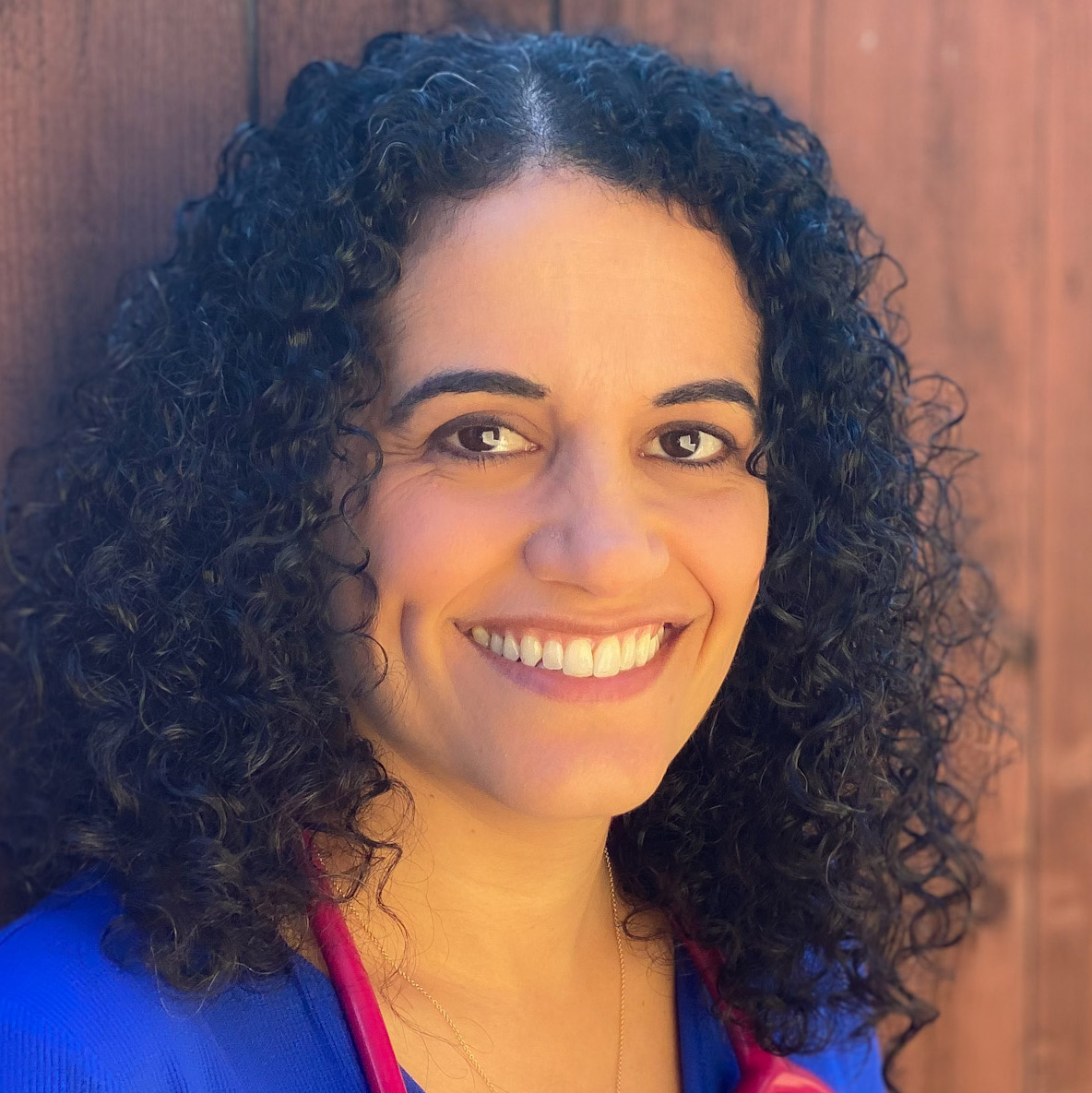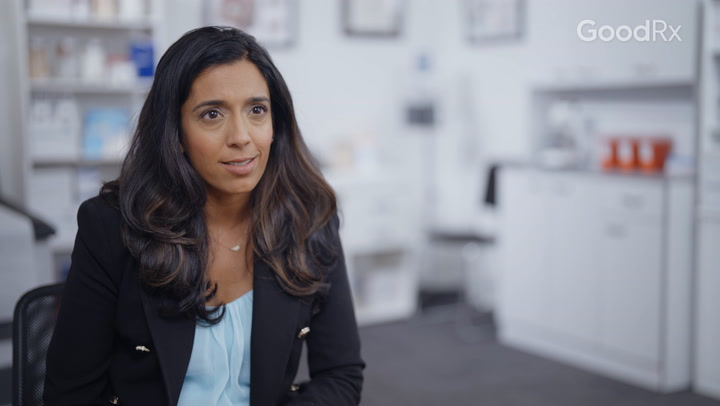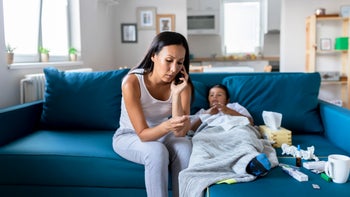
How Long Are You Contagious With RSV?
Key takeaways:
Most people with respiratory syncytial virus (RSV) are contagious for 3 to 8 days.
Many people don’t have any symptoms during the first 1 to 2 days of their illness. But they can still spread the virus to others.
People usually get sick with RSV 4 to 6 days after being exposed to the virus.
Table of contents

Respiratory syncytial virus (RSV) is a virus that causes the common cold. But it can also cause more serious lower respiratory tract infections, like bronchiolitis or pneumonia. Young children, older adults, and people with chronic medical conditions are more likely to get seriously sick from RSV.
RSV is extremely contagious. It spreads through respiratory droplets, much like the flu and COVID-19. Your immune response to RSV doesn’t last very long. This means you can get RSV multiple times — even twice in the same year.
If you or a loved one is at risk for more serious RSV illness, it’s important to know when RSV is contagious. Here’s what you need to know about how long it takes to develop RSV and when people are most contagious.
Search and compare options
How long is someone with RSV contagious?
Most people with RSV are contagious for 3 to 8 days. But the situation is a little more complicated than it seems.
The 3 to 8 days is a typical range. But some people can be contagious for much longer. Studies show that infants and individuals with weakened immune systems can remain contagious for up to 4 weeks — even if their symptoms have already gone away.
RSV can easily spread through a household or school because you can be contagious a few days before you start having symptoms. This means you might be spreading the virus to others without knowing you’re sick in the first place.
Also, some people don’t develop any symptoms when they get RSV. One study showed that up to 40% of people with RSV don’t have symptoms (asymptomatic RSV). While people without RSV symptoms don’t shed quite as much virus, they can still be contagious.
Anyone who’s contagious can spread RSV to others. This means adults can pass it to kids and vice versa.
When do you become sick after exposure to RSV?
People usually develop RSV symptoms within 4 to 6 days after being exposed to the virus. This is the RSV incubation period. Some people develop symptoms in as little as 2 days, while others can take up to 8 days to get sick. Keep in mind that some people can get RSV and not have any symptoms at all.
Treatment options for respiratory syncytial virus (RSV): You can often treat mild RSV illness with home remedies. But severe illness can require more intensive treatment.
Can adults get RSV? Yes, it’s more common in children, but adults can get RSV too.
RSV vaccines: There are several RSV vaccines available for older adults. Learn more about your options for preventing RSV illness.
How long does RSV last?
For most people, RSV lasts a week or two. But some people will have lingering symptoms — like a prolonged cough — that can last up to 4 weeks. RSV tends to last longer in toddlers and babies than in older children. One study found that children under age 5 had RSV symptoms that lasted 2 to 3 days longer than those in children over age 5.
RSV also may last longer in people older than 65 years of age. And if you have chronic lung disease or asthma, recovery may take longer because RSV can trigger an asthma attack or an exacerbation in chronic obstructive pulmonary disease (COPD).
On average, symptoms from RSV last longer than those from influenza, even though healthy adults with RSV will have more mild symptoms than those with the flu.
RSV symptoms in adults and children
RSV usually causes symptoms of an upper respiratory infection in both children and adults. But children and older adults may have more severe symptoms.
RSV symptoms in children
Children with RSV often have symptoms such as:
Cough
Runny nose or nasal congestion
Sneezing
Fever
Fussiness
Poor feeding
The younger a child is, the more at risk they are for a cold from RSV to turn into something more serious — like bronchiolitis or pneumonia. These are types of lower airway infections. In these cases, RSV usually starts out with the typical cold-like symptoms mentioned above, and then the infection can spread to the smaller airways around days 3 to 5 (for bronchiolitis) or later (for pneumonia).
Signs of a more serious infection with RSV include:
Fast breathing
Wheezing
Trouble breathing, which can look like nostrils flaring or ribs sticking out with each breath
Unusual tiredness
Low oxygen levels
New fever that starts a few days (or more) after the respiratory symptoms
RSV symptoms in adults
Adults with RSV will often have symptoms similar to those of younger children, including:
Cough
Nasal congestion or runny nose
Sore throat
Low energy
Mild cough
Adults over 65 years of age or those with other chronic medical conditions are more likely to develop more serious symptoms of RSV, including:
Trouble breathing
Wheezing
Grunting while breathing
Getting tired more easily
Fever
How is RSV spread?
RSV is spread through respiratory droplets from an infected person. So, it’s similar to other viruses that cause the common cold. RSV can be spread through:
Coughing
Sneezing
Touching a person who has infected droplets on their body (for example, from sneezing on their hands)
Touching an object (like a doorknob) that someone with RSV coughed or sneezed on
RSV can last on surfaces like countertops and plastic toys for up to 6 hours. So, it can also be spread by sharing toys — which is one reason it spreads so rapidly in daycare settings and households.
What should you do if you test positive for RSV?
Act quickly if you or someone in your home tests positive for RSV. Studies show that RSV is so contagious that everyone in a household can get RSV in less than a week.
People with RSV can be contagious even if they don’t have a fever or any other symptoms. But there are still things you can do to help prevent spreading it.
Don’t go to work or school
If you’re sick, stay home! Remember, adults get RSV too. And they can spread it to others in their home. It’s not just kids who need to stay home from school if they’re sick. Adults should stay home from work as well. If you’re feeling better but still have symptoms, consider wearing a mask to limit spread to others.
Stay away from vulnerable loved ones
Some people are more likely to develop serious RSV illness. This includes young children, older adults, and people with weakened immune systems or chronic illnesses. If you’re sick, stay away from any loved ones who are at risk for serious infection.
If you have a baby at home, always wash your hands before feeding or caring for them. Consider wearing a mask to limit spread. If your baby develops symptoms, like runny nose or coughing, call your pediatrician for further guidance
Wash your hands
RSV is a common cold virus, so general hygiene practices like frequent hand washing will help limit the spread. It also helps to cover coughs and sneezes (and wash hands afterward). Be sure not to share cups or utensils while you’re sick.
Disinfect surfaces
Since RSV can live for several hours on surfaces, it’s a good idea to disinfect commonly touched areas. This can include things like crib railings, countertops, doorknobs, and toilets. If you have multiple kids at home, you might also want to keep their toys separate if only one of them is sick.
When to see a healthcare professional for RSV
Most children and adults with RSV can be treated at home with simple remedies. At-home treatments for mild RSV in adults and children include:
Fluids: This helps you stay hydrated and allows your body to work at its best for recovery. Being well-hydrated will also help thin your mucus.
Honey: This is to help relieve your cough and sore throat. But remember not to give honey to children under 1 year old.
Nasal saline: This is to help clear out secretions and make it easier to breathe.
OTC cold medications: This is to help ease symptoms like fever and body aches.
But RSV can also cause serious illness. If you or your child develop any of the above symptoms of serious infection — like trouble breathing, wheezing, or unusual tiredness — get immediate medical care.
In-hospital treatments for adults and children with severe RSV can look fairly similar and include extra oxygen, intravenous (IV) fluids, and saline mist nebulization. People with a history of asthma may also need steroids to lessen inflammation in their lungs.
Some children and adults can develop bacterial pneumonia on top of their RSV infection. In these cases, your healthcare team might treat you with antibiotics. But antibiotics won’t help treat the RSV.
Frequently asked questions
Most people with RSV are contagious for 3 to 8 days. If you’re generally healthy and your symptoms are better, you’re probably no longer contagious. But it can be hard to know for sure. Infants and people with weakened immune responses can be contagious for up to 4 weeks, even if they don’t show symptoms.
The worst day of RSV symptoms is usually around days 3 to 5 of the illness. Sometimes, this is when symptoms of a more serious infection — like RSV bronchiolitis — start. For younger children and infants, it’s especially important to monitor closely for any difficulty breathing or wheezing during this time.
The best medicine for RSV is one that’s given before you get sick to help prevent the virus. Beyfortus (nirsevimab) is an antibody injection for pregnant women, babies under 8 months (if their mom didn’t get the injection while pregnant), and some children up to 19 months who have medical problems.
If you catch RSV, most cases can be treated with the at-home remedies mentioned above. If you have more severe symptoms, like difficulty breathing, you may need treatments like oxygen, saline mist nebulizer, or IV fluids.
The bottom line
People start being contagious with RSV 4 to 6 days after being exposed to the virus. Most people with RSV remain contagious for 3 to 8 days. Young infants and people with weakened immune systems can be contagious for weeks.
People can be contagious even if they don’t have a fever or any other RSV symptoms. If you have RSV, stay home as much as possible until you’re no longer contagious. If you need to go out, wear a mask. And make sure to avoid contact with people who are at risk for serious RSV infections, including infants, older adults, and those with chronic medical conditions.
Why trust our experts?



References
Caserta, M. (2024). RSV: When it’s more than just a cold. Heealthychildren.org.
Centers for Disease Control and Prevention. (2024). How RSV spreads.
Erickson, E. N., et al. (2023). Pediatric bronchiolitis. StatPearls.
Hall, C. B., et al. (2001). Respiratory syncytial virus infections in previously healthy working adults. Clinical Infectious Diseases.
Jain, H., et al. (2023). Respiratory syncytial virus infection in children. StatPearls.
Kaler, J., et al. (2023). Respiratory syncytial virus: A comprehensive review of transmission, pathophysiology, and manifestation. Cureus.
Munywoki, P. K., et al. (2015). Frequent asymptomatic respiratory syncytial virus infections during an epidemic in a rural Kenyan household cohort. The Journal of Infectious Diseases.
Otomaru, H., et al. (2021). Risk of transmission and viral shedding from the time of infection for respiratory syncytial virus in households. American Journal of Epidemiology.



















